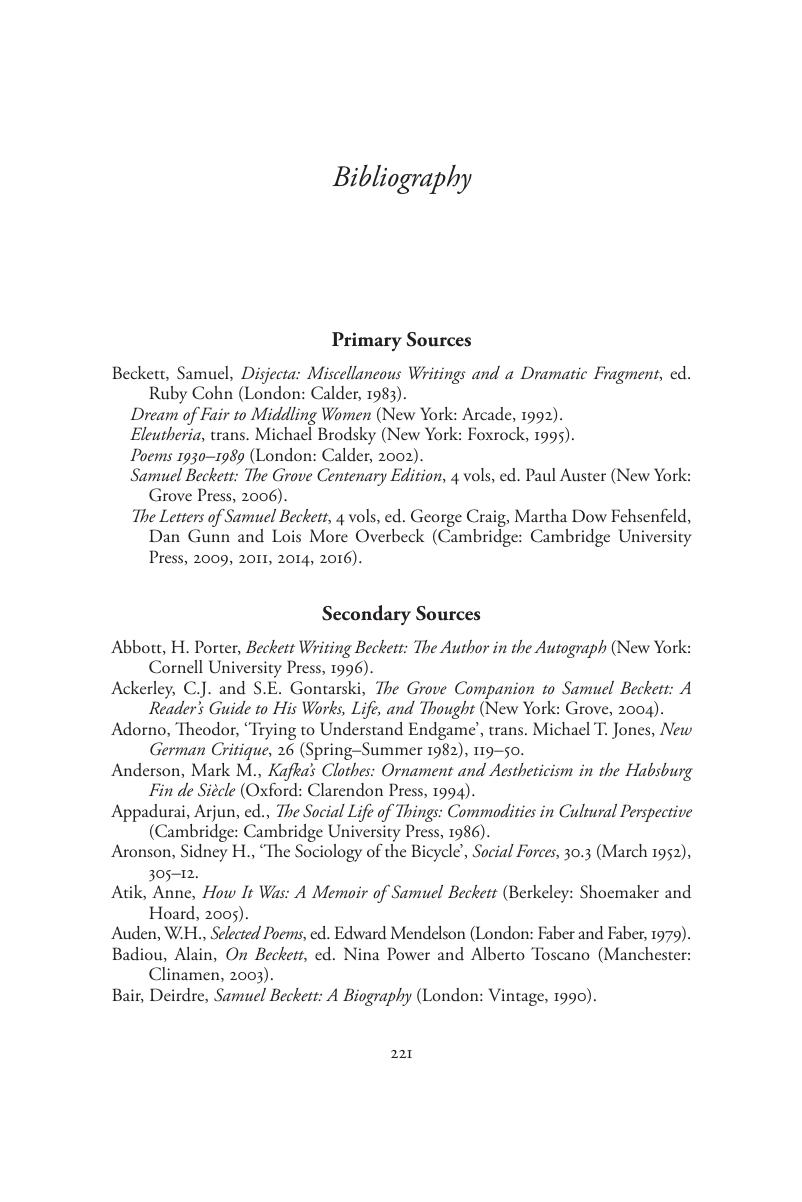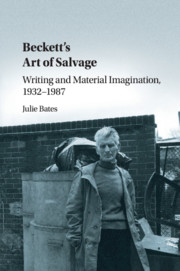Book contents
Bibliography
Published online by Cambridge University Press: 04 May 2017
Summary

- Type
- Chapter
- Information
- Beckett's Art of SalvageWriting and Material Imagination, 1932–1987, pp. 221 - 234Publisher: Cambridge University PressPrint publication year: 2017

